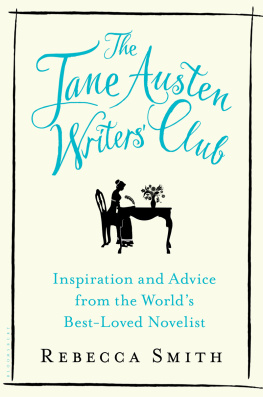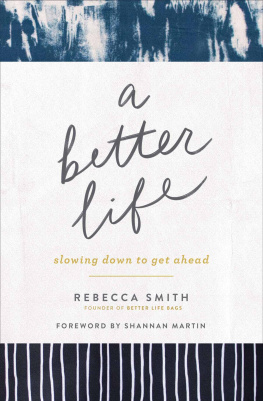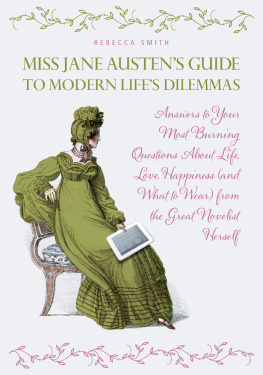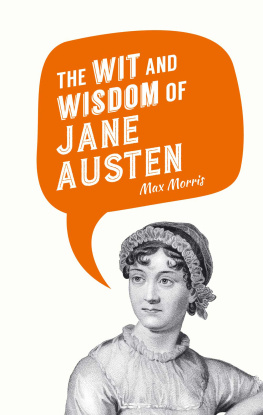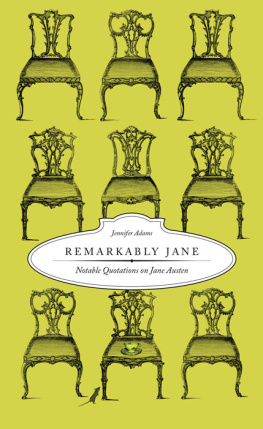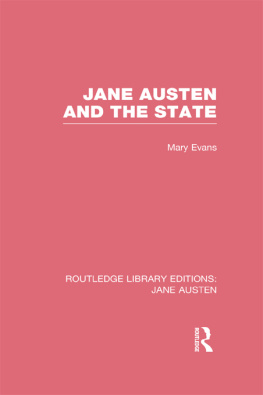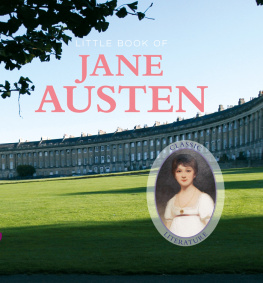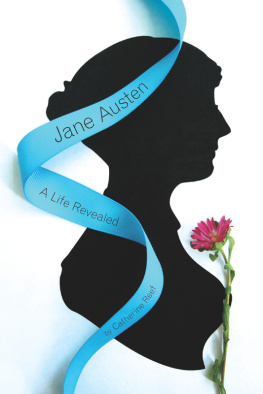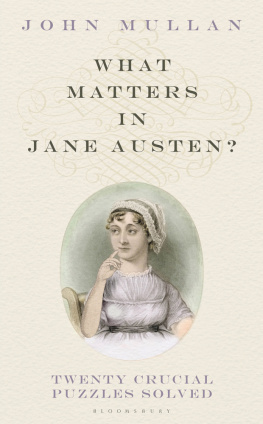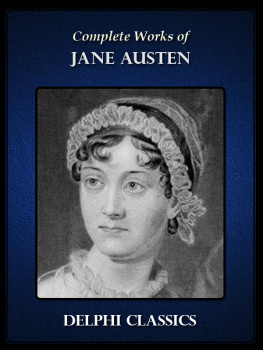
For the staff, volunteers and trustees, past and present, of Jane Austens House Museum
ALSO BY REBECCA SMITH
Fiction
The Bluebird Caf
Happy Birthday and All That
A Bit of Earth
Non-fiction
Jane Austens Guide to Modern Lifes Dilemmas

CONTENTS
Planning, plotting and getting started
Creating and developing your characters
Creating and utilizing your setting
Point of view
Writing dialogue
Jane Austens recipe and method for a suspenseful novel
Techniques and devices of the great author
Making use of journeys (and staying at home) in your work
Using food and meals in your writing
About the writing life, not food

I have been following Jane Austen around for a long time. Like so many people I was introduced to her work at school Pride and Prejudice when I was fourteen, the perfect age. The school was in Dorking, or the Town of D as Jane Austen puts it in The Watsons. It was a short walk from Box Hill, site of the disastrous picnic in Emma. I didnt notice any Mr Darcys or Mr Knightleys in Form 4A, but there were plenty of aspiring heroines like Catherine Morland. Pride and Prejudice was one of the first novels for adults that I fell in love with. It transported me from a world of boys who tortured wasps to Pemberley. I remember reading it in the garden of our house, which was in Reigate, not Dorking, in the company of a neighbours disreputable frog-killing ginger tom. I called him Ginger Wickham.
I am Jane Austens five-times-great-niece. It is a nice thing to be but no claim to fame. Jane Austens brothers had thirty-three children between them, so two hundred years on there must be thousands of Austen descendants. But when I visited my great-aunt in Winchester I loved looking at some little portraits of Jane Austens sailor brothers, Francis (my ancestor) and Charles, and what turned out to be a rare depiction of her father, the Reverend George Austen. These portraits are now on display at Jane Austens House Museum in Chawton, Hampshire so I can visit them there.
I went to university in Southampton and still live in the city and teach creative writing at the university. There are still traces of the Southampton Jane Austen knew when it was her home before she finally settled at Chawton. The sea has been pushed back from where it once came up to the city walls so that she could see it from the garden she created with Franciss family, her sister Cassandra and her mother. She liked the city there was and is much more to it than the stinking fish mentioned in Love and Freindship.
From 2009 to 2010 I had the immense good fortune to be the writer-in-residence at Jane Austens House Museum. I reread all Janes works and her letters and had a wonderful year with the staff and volunteers, talking to visitors, running writing workshops, visiting schools, generally getting lost in Austen and working on my fifth novel. On Jane Austens 234th birthday, 16 December 2009, I was one of the first in the house. I remember going to open the shutters in Janes bedroom and desperately hoping that Id catch a glimpse of her. I didnt, but this book had its genesis during that year. Spending so much time where Jane Austen lived, where she wrote Mansfield Park, Emma and Persuasion and revised her three earlier novels, walking where she did and seeing the views from her windows was magical and inspiring. The museum isnt haunted, but many of the staff, volunteers and visitors testify to its healing atmosphere. I have now run many writing workshops at Jane Austens House Museum and elsewhere, using Janes work and methods to inspire writers working in all genres. Im so grateful to the museum for the opportunities it has given me and to the writers who have come to the workshops, sharing their writing, ideas and experiences.
I thought of those writers as I worked on this book. I hope it will be useful to them and to writers around the world who love Jane Austen or are less familiar with her work, and to readers, teachers and Janeites everywhere.
I hope this book will help you, whether you are writing a novel, concentrating on short stories or working in another form. People love Jane Austens work for so many reasons the comedy, her sparkling dialogue, the unforgettable characters, the accuracy of her observations, her neat and satisfying plots, her use of language, the way she writes relationships, and how she captures what it is to be in love, lonely, bullied, wrong, disappointed, to be part of a family... The list goes on and on. Her letters give us wonderful insights into her life, and in them she gives advice on writing; I have included that too.
One of the most difficult aspects of writing this book was deciding which extracts to use and then having to limit their length. I hope you find the advice and exercises useful. Im sure that the quotations will send you back to Jane Austens novels and letters themselves. There is no better place to go.
Rebecca Smith
Spring 2016
Planning, plotting and getting started
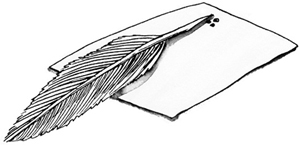
This chapter is about planning a novel and the things you can do to set out in the right direction and stay on track. You cant plan everything. Unless you are doing something truly formulaic, such as writing as an anonymous jobbing author for a series, you should leave room to surprise yourself, for creativity and for those moments of alchemy and inspiration which have the power to lift and transform your work.
Its probably easier to suggest how not to write a novel. Jane Austen knew exactly what she didnt want to write. Her Plan of a Novel according to hints from various quarters dates from 1816, when she was corresponding with James Stanier Clarke, the Prince Regents chaplain and librarian at Carlton House. He was clearly rather taken with her but couldnt resist making lots of helpful suggestions for her work. Perhaps he hoped to make himself indispensable to her. Dream on, Mr Stanier Clarke. Her letters to Mr Clarke and her Plan of a Novel show us what she definitely wouldnt do. She included in the margins the names of people whose hints she was not going to take. His name was there.
Incidentally, one of the most likely but unauthenticated portraits of Jane Austen is a watercolour by James Stanier Clarke preserved in his Friendship Book. This lovely portrait of an elegant woman is very likely Jane. She had been invited to dedicate her next novel (Emma) to the Prince Regent, who was a fan. She wasnt a fan of his but had no choice but to comply.
Here is Janes Plan of a Novel.
SCENE to be in the Country, Heroine the Daughter of a Clergyman, one who after having lived much in the World had retired from it and settled in a Curacy with a very small fortune of his own. He, the most excellent Man that can be imagined, perfect in Character, Temper, and Manners without the smallest drawback or peculiarity to prevent his being the most delightful companion to his Daughter from one years end to the other. Heroine a faultless Character herself, perfectly good, with much tenderness and sentiment, and not the least Wit very highly accomplished, understanding modern Languages and (generally speaking) everything that the most accomplished young Women learn, but particularly excelling in Music her favourite pursuit and playing equally well on the PianoForte and Harp and singing in the first stile. Her Person quite beautiful dark eyes and plump cheeks. Book to open with the description of Father and Daughter who are to converse in long speeches, elegant Language and a tone of high serious sentiment. The Father to be induced, at his Daughters earnest request, to relate to her the past events of his Life. This Narrative will reach through the greatest part of the first volume as besides all the circumstances of his attachment to her Mother and their Marriage, it will comprehend his going to sea as Chaplain to a distinguished naval character about the Court, his going afterwards to Court himself, which introduced him to a great variety of Characters and involved him in many interesting situations, concluding with his opinions on the Benefits to result from Tithes being done away, and his having buried his own Mother (Heroines lamented Grandmother) in consequence of the High Priest of the Parish in which she died refusing to pay her Remains the respect due to them. The Father to be of a very literary turn, an Enthusiast in Literature, nobodys Enemy but his own at the same time most zealous in discharge of his Pastoral Duties, the model of an exemplary Parish Priest. The heroines friendship to be sought after by a young woman in the same Neighbourhood, of Talents and Shrewdness, with light eyes and a fair skin, but having a considerable degree of Wit, Heroine shall shrink from the acquaintance.

